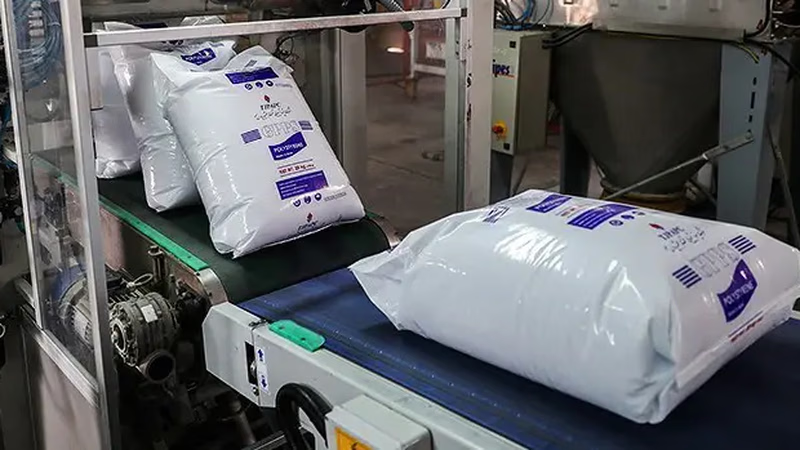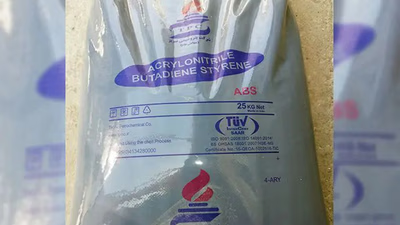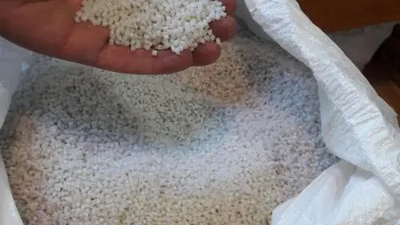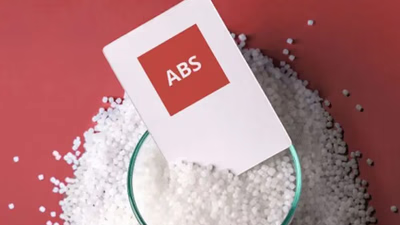
ABS plastic applications in automotive and consumer electronics.
ABS exhibits a balance of mechanical properties that make it highly desirable for various applications. It combines toughness, impact resistance, and rigidity, allowing it to withstand mechanical stresses and impacts without breaking or deforming easily. This makes ABS suitable for applications where durability and structural integrity are essential. ABS has good thermal stability, meaning it can withstand a wide range of temperatures without significant degradation. It retains its mechanical properties even at elevated temperatures, making it suitable for applications that involve exposure to heat or temperature variations.
ABS offers good resistance to a variety of chemicals, including acids, alkalis, and oils. This chemical resistance allows ABS to be used in applications where contact with different substances is expected, such as pipes, fittings, and chemical storage tanks. ABS has excellent electrical insulation properties, making it suitable for applications where electrical conductivity needs to be minimized or electrical insulation is required. It is commonly used in electrical enclosures, connectors, and insulating components. ABS is generally more affordable compared to other engineering thermoplastics, making it a cost-effective choice for many applications. Its combination of desirable properties, availability, and competitive pricing contributes to its widespread use in various industries.
ABS is extensively used in the automotive sector for both interior and exterior components. It is used for manufacturing dashboard parts, door panels, trims, grilles, bumpers, wheel covers, and interior consoles. Its impact resistance, rigidity, and ability to be molded into complex shapes make it suitable for automotive applications. ABS is widely employed in consumer electronics due to its electrical insulation properties, impact resistance, and ease of processing. It is used for manufacturing computer and laptop housings, keyboards, mouse devices, game controllers, TV remote controls, and phone cases.
ABS is one of the commonly used materials in 3D printing. Its good impact resistance, durability, and machinability make it suitable for creating functional prototypes, mechanical parts, and various consumer products using additive manufacturing techniques. ABS plastic is one of the inexpensive thermoplastic plastics that has a wide range of applications in industry due to its balanced thermal, chemical and mechanical properties. The main application of ABS is in the manufacture of car body parts and the automotive industry. Other applications include the following:
- Manufacturing car body parts including dashboard, door covers, car interior parts, seat belts, car bumpers and wheel covers
- Production of injectable parts such as Lego (children's toys)
- Build a phone
- Production of home appliances such as refrigerators
- Production of hand tools for power tools
- Build a computer body
- Production of cryogenic insulation
- Plating industry
What are the disadvantages of ABS plastic?
- Flame sensitivity
- Opacity
- Change color and properties against sunlight
Although ABS has its drawbacks, it can be overcome by alloying it with other materials. For example, by alloying it with PVC, ABS can be reduced to flame sensitivity, making it slow-burning as well as vulnerable. To solve the problem of opaque ABS, it can be alloyed with poly-methyl methacrylate to achieve ABS.
ABS is relatively easy to process using various manufacturing techniques, including injection molding, extrusion, and 3D printing. Its low melting point and good flow characteristics make it suitable for mass production and complex part geometries. This ease of processing contributes to its widespread use in industries where efficient and cost-effective manufacturing is crucial. ABS can be easily modified or blended with other polymers or additives to enhance specific properties or achieve desired characteristics. This versatility allows for customization and adaptation of ABS to meet specific application requirements.
ABS is commonly utilized in the manufacturing of household appliances. It is used for producing parts such as refrigerator liners, washing machine and dryer components, vacuum cleaner housings, and control panels. ABS is employed in the construction industry for various applications. It is used for manufacturing pipes, fittings, and valves due to its chemical resistance and durability. ABS sheets are used in architectural models, signage, decorative panels, and interior design elements. ABS is a popular choice for manufacturing toys and recreational products due to its impact resistance and ability to be molded into intricate shapes. It is commonly used in building blocks, action figures, puzzles, model kits, and sporting goods.
-

ABS polymer is widely utilized in the automotive sector for injection-molded components, including interior and exterior parts like dashboard panels and bumper covers. Its applications extend to electronic enclosures, consumer goods, and various household items due to its moldability and aesthetic appeal. The affordability of ABS makes it a preferred choice in the plastic injection industry. Additionally, ABS"s structural diversity allows for various properties, enabling manufacturers to create products with different shapes and uses. The polymer is also employed in appliance components, toys, recreational products, and certain medical devices due to its durability, impact resistance, and chemical resistance. Innovations such as MBS alloy have emerged to enhance ABS"s properties, offering alternatives with high transparency but lower tensile strength. Overall, ABS remains a versatile material in plastic injection molding across multiple industries.
-

Asia"s abundant reserves of acrylonitrile, butadiene, and styrene make it a prime location for ABS polymer production. Countries like South Korea, Taiwan, and Japan have advanced petrochemical industries supported by significant investments in infrastructure and technology. Major producers such as LG Chem, Chi Mei Corporation, and Formosa Plastics Corporation leverage their proximity to raw materials and major markets to reduce costs and enhance delivery efficiency. The region"s favorable policies promote growth in the petrochemical sector, further boosting ABS production capabilities. In the Middle East, companies like Tabriz Petrochemical and Ghaed-Basir Petrochemical also contribute to ABS manufacturing. The demand for ABS is rising due to rapid industrialization across Asia, with applications spanning automotive, electronics, and construction sectors. Competitive pricing is achieved through lower labor costs and efficient supply chain management. However, challenges such as recycling contamination need addressing to maintain quality in recycled ABS products.
-

ABS plastic is valued for its mechanical properties, including toughness, impact resistance, and rigidity, making it ideal for various industrial applications. Its thermal stability allows it to maintain performance under temperature fluctuations, while its chemical resistance enables use in environments with exposure to acids and oils. ABS is widely utilized in the automotive sector for components like dashboards and bumpers due to its durability and moldability. In consumer electronics, it serves as a material for housings and connectors. Additionally, ABS is popular in 3D printing for creating prototypes and functional parts. Despite some disadvantages such as flame sensitivity and opacity, these can be mitigated through alloying with other materials. The ease of processing ABS through methods like injection molding enhances its appeal across industries, including household appliances and construction. Its versatility allows customization to meet specific application needs.
-

Acrylonitrile Butadiene Styrene (ABS) is a widely used thermoplastic polymer known for its toughness, impact resistance, and dimensional stability. Composed of acrylonitrile, butadiene, and styrene, ABS combines the strengths of these monomers to create a versatile material suitable for various industries. Its properties include chemical resistance, heat resistance, and hardness from acrylonitrile; impact resistance from butadiene; and rigidity from styrene. ABS is prevalent in consumer electronics like keyboards and phone cases, as well as in automotive parts, household appliances, and construction materials. The polymer"s machinability allows for precise component production through conventional methods such as cutting and drilling. ABS is also cost-effective compared to other engineering thermoplastics and offers good electrical insulation properties. However, it may not be suitable for all applications due to its limited chemical resistance and potential degradation under prolonged sunlight or high temperatures. Therefore, careful consideration of application requirements is essential when selecting ABS. "
-

ABS polymer offers significant advantages for plastic injection molding, including excellent impact resistance, ease of processing, and good flow properties. Its versatility allows for modifications to enhance specific characteristics, making it suitable for various applications. ABS provides a smooth surface finish, reducing the need for additional finishing processes. It also exhibits good chemical resistance, making it ideal for environments where contact with different substances is common. However, ABS has notable disadvantages such as a low melting point, which limits its use in high-temperature applications like medical implants. Its resistance to corrosion and UV rays is also low, leading to potential degradation over time when exposed to sunlight or harsh conditions. Additionally, ABS can warp during cooling and has moderate shrinkage that requires careful design considerations during production. Despite these drawbacks, the material"s ductility and affordability contribute to its popularity in producing everyday plastic products. "





